Local personalities
Local personalities
There are a number of famous people, notable for their contribution to the history of the local area, linked with East Dunbartonshire. Some of these famous figures have gained national and international recognition for their achievements.
In 1920 Rita Cowan, a doctor’s daughter from Kirkintilloch, married a Japanese chemistry student, Masataka Taketsuru, and together they made a new life in Yoichi, Japan. Masataka founded the Nikka Whisky Distilling Company. Rita supported her husband and became known as the ‘Mother of Japanese Whisky’.
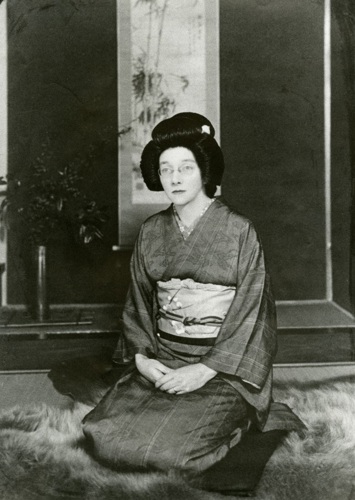
Rita and her family lived in Middlecroft House, a large villa in Kirkintilloch. Rita attended Lenzie Academy from 1908 to 1913. Prior to this she was privately educated at home.
Following Dr Cowan’s death, Mrs Cowan took in a lodger to help with the family finances. The lodger was a young Japanese man called Masataka Taketsuru. He had come to Scotland to learn how to make whisky and as part of this research he enrolled in organic chemistry classes at the University of Glasgow in March 1919.
Rita and Masataka developed a close relationship and married in January 1920 at Calton Registry Office in Glasgow. The couple moved to Japan and adopted a baby girl named Rima. Masataka established his own distillery at Yoichi, marking the beginning of what was to become the major Japanese drinks business, Nikka.
To find out more about Rita and Masataka’s story, visit Kirkintilloch Town Hall to see the permanent display about the couple, or look out for these books about Rita in EDLC Libraries:
Japanese whisky, Scotch blend : Masataka Taketsuru, the Japanese whisky king and Rita, his Scotch wife by Olive Checkland
Rita : the Scottish girl who married the founder of Japanese whisky
In 2015 a Japanese TV programme based on Rita and Masataka’s story was broadcast by the Japanese national broadcaster NHK. The title ‘Massan’ was Rita’s pet name for her husband. The series consisted of 150 daily 15 minute episodes. The role of ‘Ellie’ a fictional character based on Rita was played by American actress Charlotte Kate Fox.
In 1958 Jenny (Janet) Coutts of Heath Avenue, Lenzie was elected as Kirkintilloch Town Council's first female Councillor. She later went on to become the town's first female Provost in 1964.
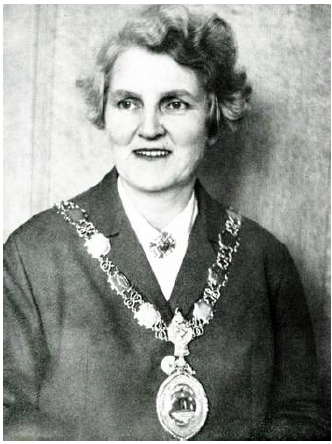
Councillor Coutts kept news cuttings relating to local politics, pasting them into a series of hardback volumes. The volumes are permanently preserved in our Archives as a fascinating record of her civic career.
Janet Maxwell Barclay was born in 1909 in Carnwath, South Lanarkshire, the daughter of Gavin and Janet Barclay. After leaving Lanark Grammar school she completed a secretarial course and worked in offices at Bath Street, Glasgow. She later met her husband Willie Coutts through the International Club. The couple moved to Lenzie in 1949 with their two sons and Jenny Coutts quickly became a part of the community.
Mrs Coutts devoted her life to helping others, working tirelessly for the community as a councillor, charity worker and campaigner. For twenty years she served the Lenzie ward as in independent councillor, becoming the first female Provost of Kirkintilloch in 1964. She was awarded an MBE for her contribution to social work in 1973, and was a Justice of the Peace.
Jenny Coutts believed passionately in community spirit, often saying: “It’s not what you can do for me, but what I can do for you.”
Jenny Coutts was one of Kirkintilloch’s longest serving council members. She died on March 18th 2008 at the age of 98. An environmentally friendly service was held at Langfaulds Cemetery, Bearden, while over 150 people attended the memorial service at Lenzie Union Parish Church to pay their respects.
Born in Edinburgh in 1961, Jackie Kay is one of Scotland’s most acclaimed poets, authors and playwrights. Brought up in Bishopbriggs, she has held the position of Scots Makar, the national poet laureate of Scotland since 2016.
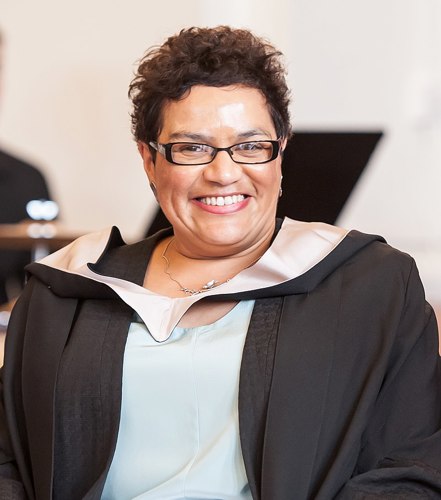
Adopted as a baby, in 2010 she published Red Dust Road an account of her search for her biological parents. The book was named Scottish Book of the Year in 2011 and adapted for the stage, premiering in August 2019 at the Edinburgh International Festival.
Appearing on Desert Island Discs (BBC Radio 4) in 2016 she discussed suffering racism at school due to her part Nigerian heritage. In the same year on a Southbank Show (ITV) programme about her life, she spoke of her actively political upbringing in Bishopbriggs where her mother Helen was Scottish Secretary for the Campaign for Nuclear Disarmament and her father John worked for the Communist Party.
Graduating with a degree in English from the University of Stirling in 1983, her first book of poetry, the partially autobiographical The Adoption Papers, was published in 1991 winning the Saltire Society Scottish First Book Award. She has garnered many other awards throughout her career including the 1994 Somerset Maugham Award for Other Lovers, and the Guardian Fiction Prize for Trumpet, inspired by the life of American jazz musician Billy Tipton, born Dorothy Tipton, who lived as a man for the last fifty years of his life.
A Cultural Fellow at Glasgow Caledonian University and a Fellow of the Royal Society of Edinburgh, she was appointed as Chancellor of the University of Salford in 2015 and is currently Professor of Creative Writing at Newcastle University.
She was made a Member of the Order of the British Empire (MBE) in 2006 and Commander of the Order of the British Empire (CBE) in the 2020 New Year Honours list, both for services to literature.
Tom Johnston (1881 - 1965)
Tom Johnston was one of the leading Scottish politicians of the twentieth century.
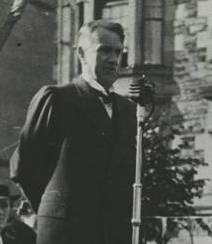
In 1913 he was elected to Kirkintilloch Town Council and made an immediate influence. He set himself up as the champion of municipal housing and became involved in the introduction and development of many other council services. He left the Council in 1922 to concentrate on national politics, but retained many links with Kirkintilloch. In 1931 he became the first Freeman of the Burgh.
Johnston gave outstanding service during World War II as Secretary of State for Scotland. He retired from Parliament in 1945 but in the post-war years he served as Chairman of the North of Scotland Hydro-Electric Board, The Scottish National Forestry Committee and The Scottish Tourist Board. Many new ideas were introduced in all of his spheres of influence. His legacy remains right down to the present time.
Thomas Muir (1765-1799)
In 1792, at the age of seventeen, Thomas Muir abandoned his Divinity studies at Glasgow University in favour of Law. This was also the year Thomas’s father bought property at Huntershill in the Parish of Cadder and Thomas adopted the style of extended name then customary in Scotland and became Thomas Muir, Younger of Huntershill.
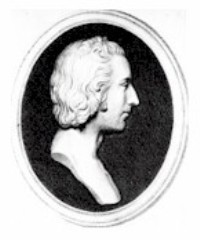
When the French Revolution stimulated a desire for parliamentary reform in Britain, Muir associated himself with the radical wing of the movement. He was charged with sedition and stood trial on 30th August, 1793 for "exciting a spirit of disloyalty and disaffection", for recommending Thomas Paine’s "Rights of Man" and for distributing and reading aloud inflammatory writings. Muir defended himself at the trial but was found guilty by Lord Braxfield and four other anti-reform judges and sentenced to fourteen years transportation to Botany Bay in Australia.
In 1796 Muir arranged his escape to America aboard the "Otter". Shipwreck, captivity among American Indians, detention in Mexico and imprisonment in Havana followed. Whilst returning to Europe he was severely wounded in a naval engagement with the "Ninfa". It was as a result of these wounds that he died less than two years later at Chantilly in France.
Muir's international reputation is undoubtedly secure and East Dunbartonshire Leisure & Culture Trust aims to ensure his reputation at home is equally celebrated and marked.
He is justly remembered as the Father of Scottish Democracy.
The son of a draughtsman, William Patrick was born in Glasgow on 8 Sep 1852. He was educated at Gorbals Youths' School and Glasgow University, where he graduated with first class honours in mental philosophy in 1875. Between 1874 and 1878 he studied at the Free Church College, Glasgow, and was ordained in 1878.
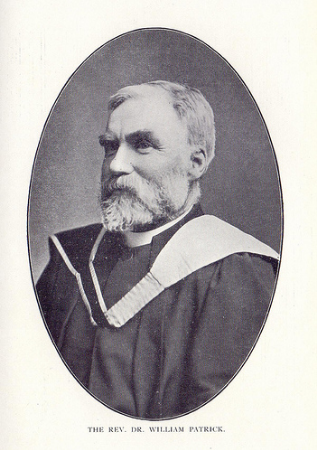
From 1878 to 1892 William Patrick was minister of Free St David's Church, Kirkintilloch, where his personality and progressive ideas steadily increased church attendance. His younger brother, David Patrick, who joined him in Kirkintilloch in 1884, was a partner in the legal firm of Patrick & Paterson, and was Town Clerk of Kirkintilloch from 1887 until his death in 1941.
To the consternation of some, William Patrick combined his religious ministry with politics. He was elected to Kirkintilloch School Board in 1885, and was chair of the Board until 1891. He was also a lifelong abstainer and helped to form the Kirkintilloch Temperance Union; the Temperance campaign became particularly strong in Kirkintilloch, leading to the town becoming ‘dry’ from 1921 to 1968.
In 1892, William Patrick left Kirkintilloch to become minister of Free St Paul's Church, Dundee, and in 1900 he took up the post of Principal of Manitoba College, Winnipeg, Canada. He returned to Kirkintilloch in 1911 when he became seriously ill, and died the same year. He is buried in the Old Aisle Cemetery.
In 1929 David Patrick purchased Camphill House in Kirkintilloch from James Slimon, which he donated to Kirkintilloch Town Council as a library to be named after his brother. The William Patrick Memorial Library remained in Camphill House until 1994 when it moved to the purpose-built William Patrick Library at Kirkintilloch Cross.
George Bennie was born at Pollokshaws, Glasgow, in 1892, the son of an engineer. In his youth he began to show signs of his ability as an inventor and several patents were registered in his name.
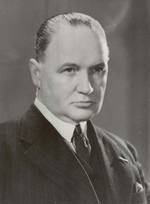
During the 1920s, he turned his attention to a revolutionary new concept of public transport. His idea was to get railways off of the ground and into the air. Bennie believed that fast passenger traffic should be separated from the slower heavy goods trains.
Essentially a monorail, the 'railplane' would be built above the existing railway system as a passenger-only service, while the slower freight trains would travel below. Bennie hoped that his invention would regain revenue which had been lost because of rail inefficiency.
During 1929-30 Bennie built a test track at Burnbrae, Milngavie, above an existing railway branch line. The result was like a scene from a Jules Verne novel. The strange looking contraption was more like a giant cigar than the latest mode of transport. The car was suspended from a 130-metre girder, while wheels underneath ran on a stabilizer rail to prevent the car from oscillating from side to side. The car was powered by a large propeller at either end. It was said to be capable of travelling at 120mph.
The railplane was built by Beardmores, the firm that created the R34 airship.
It was fitted out in contemporary style, with carpeted flooring and panelled ceilings .
The official launch, on July 8th 1930, received a great deal of publicity. During succeeding weeks many visitors came to admire and travel on the revolutionary new invention. It looked as if the Bennie Transport System couldn't fail. The railway companies were interested because of the lower cost of the railplane as compared to an ordinary railway.
Sadly, George Bennie was never able to find financial backing for further development of the system. He had invested large amounts of his own money in the construction of the test track and by 1937 was said to be bankrupt. He died in obscurity in 1957. The railplane and track remained in position at Burnbrae until 1956, when it was sold for scrap.
If you want to find out more about the Bennie Railplane, a book is available from East Dunbartonshire Leisure & Culture Trust, price £3.30 (plus £2.00 postage and packing). Make cheques payable to East Dunbartonshire Leisure & Culture Trust. Please print out the order form, complete and post with remittance to: Information and Achives at William Patrick Library.
Appearing in over 40 films Peter Capaldi is a Glasgow born actor, director and writer. Making his film debut in 1983 in the Bill Forsyth film Local Hero, in recent years he has appeared in films including In the Loop, World War Z, Maleficent and Paddington.
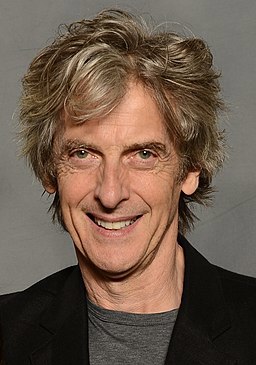
Born on the 14th April 1958, Capaldi spent his formative years in Bishopbriggs and the surrounding area. Of Italian heritage, his parents ran an ice cream business locally. He attended St Matthew’s Primary School in Bishopbriggs and St Ninian's High School, Kirkintilloch.
It was here an interest in performing began, becoming a member of the local theatre group the Antonine Players and performing at the Fort theatre in Bishopbriggs, making his stage debut there in ‘An Inspector Calls’ in March 1974.
He later attended the Glasgow School of Art before embarking on a career in acting.
In 1994, he won the BAFTA for Best Short Film for his film Franz Kafka's It's a Wonderful Life and the Academy Award for Best Live Action Short Film the following year.
Capaldi is arguably best known for his television roles with notable credits including the BBC television series The Crow Road (1996) based on the Iain Banks novel, the role of spin doctor Malcolm Tucker in the Armando Iannucci series The Thick of It (2005 – 2012, BBC) and playing the twelfth Doctor in the long running science-fiction series Doctor Who (2013 – 2017, BBC)
The role of Tucker won him several awards including the 2010 BAFTA Television Award for Male Performance in a Comedy Role.
A lifelong fan of Doctor Who, he featured in the Kirkintilloch Herald as a teenager discussing his love for the show. He was cast as the Doctor in 2013, first appearing in a cameo in the 50th anniversary special, ‘The Day of the Doctor’.
Edward Tull-Warnock (1886-1950) became the first Black professionally registered dentist in 1912. His father Daniel Tull was born in Barbados and came to Britain in 1876. His mother was from Kent. He sadly lost both his parents as a child, but the support networks they had established within their family and faith community meant that when their stepmother could no longer afford look after them and their siblings, Edward and his brother were sent to a comparatively progressive Children’s Home and Orphanage run by the Methodist church in London. At the age of 14 he was adopted by Jean Warnock who grew up in the Kirkintilloch Poorhouse and her husband James, who was a dental practitioner.
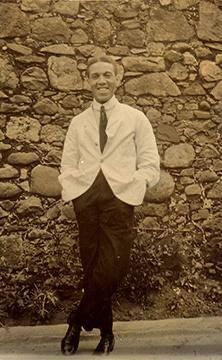
Tull-Warnock followed the profession of his adoptive father, but unlike James Warnock became a qualified dentist. He trained at the Incorporated Glasgow Dental Hospital in 1906 and worked with his adoptive father in Glasgow, as well as in Aberdeen and Girvan. In his first position as a qualified dentist, he faced racial prejudice from his employer in Birmingham.
Tull-Warnock’s brother, Walter Tull, professional footballer and British Army officer, is also an important figure in British history. He was the first British army officer of mixed heritage and the third person of mixed heritage to play in the top division of the Football League.
The local connection to Edward Tull-Warnock continues today as some of his descendants live in the East Dunbartonshire area.
Beatrice Clugston (1827-88) was a philanthropist celebrated for her contributions to the welfare of recovering and terminally ill patients in Glasgow and the West of Scotland. She is buried at the Old Aisle in Kirkintilloch where a monument was erected. Her mother Mary Mackenzie was born in Jamaica in around 1795 and was the ‘reputed’ daughter of Duncan Mackenzie, a sugar planter, meaning she was an illegitimate offspring who was recognised by the father. Mary’s mother Beatrice Morton was likely an enslaved African woman in Jamaica, and Beatrice along with two other ‘reputed’ daughters was left £50 by Duncan Mackenzie in his will. Beatrice Clugston was almost certainly of African Caribbean descent.
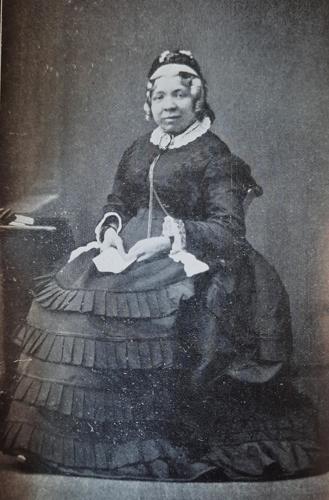
Clugston opened a convalescence home on Broomhill Estate in Kirkintilloch, the Glasgow Convalescent Home in Lenzie, and Dunoon Homes. The main motivation behind this was the desire to meet the needs of patients coming out of hospital. All the buildings associated with Beatrice Clugston’s charities are no longer standing. The Broomhill site has become a new housing development known as Beatrice Meadows. In order to fund these efforts, Clugston organised charity bazaars where goods such as furniture would be sold.
She organised some of the largest charity bazaars in Scotland. Between 1864 and 1882 her events raised £51,000, the equivalent of more than £3 million today, for hospitals and hospices in Glasgow and the West of Scotland. Clugston developed strong support networks of influential people who took part in her bazaars. These bazaars were on a particularly large scale for the time and well attended. Her bazaar in November 1871 raised £8027 which was reported as the largest amount of money ever raised in Scotland for this form of charity.
Clugston managed a busy schedule of talks and meetings throughout the wider Glasgow area, encouraging local women to get involved in her projects. Even in her retirement to Ardrossan, lobbied for a cottage hospital in the town. She published pamphlets reporting her findings from visits to existing convalescent homes across the country and presented her proposals for improving welfare in Glasgow and the West of Scotland through setting up such homes.
As well as through her fundraising efforts, Clugston brought about changes in welfare through lobbying local politicians. She successfully proposed that employers subscribe to convalescent homes, which would allow access for ill and injured employees. This plan not only improved work output, but staff retention also increased as employees appreciated this service. The Directors of the Homes felt pressure from Dunoon residents to change regulations about leaving the homes due to complaints about seeing large groups of patients exercising outside the grounds. Clugston was resolute in her welfare goals and fought for patients to continue to take walks on the beach.
Beyond her particular interest in convalescence homes and meeting the basic needs of the disadvantaged, Clugston also supported organisations such as the Kirkintilloch Temperance Hall (1873), the band of the 4th Ayrshire Artillery Volunteer Corps, Ardrossan (1875), the Edinburgh Young Women’s Institute (1875) and Whitevale UP Church, Glasgow (1883).
Her strong leadership skills were recognised in the Lennox Herald in 1888 when she was praised for her ‘perseverance, vast industry, and rare generalship’. While participation in charitable activities was relatively common for women in Victorian Britain, the scale of Clugston’s work is exceptional. She is recognised as having been willing to prioritise the needs of others over her own. A.D. Morrison notes that ‘She gave, in a far more literal sense than is true of most, all she had, to feed the poor. At the end of her life she was herself penniless, but for the kindness of friends.’
References:
Thomas Watson, Kirkintilloch: Town and Parish, (1894), p. 122.
Douglas G. Lockhart, ‘ ‘The Queen of all Bazaars’: Beatrice Clugston (1827-88), Scottish Local History 111 (Spring 2022). Includes acknowledgement of advice received from Zandra Yeaman, Hunterian Museum, University of Glasgow on the interpretation of Beatrice Clugston's Jamaican heritage.
Ena Lamont Stewart, ‘The Incurable Miss Clugston’ Glasgow Herald (15 December 1964).
A.D. Morrison, The Story of Free St. David’s, Now St David’s United Free Church, Kirkintilloch 1843-1926 (1926), p. 83.
